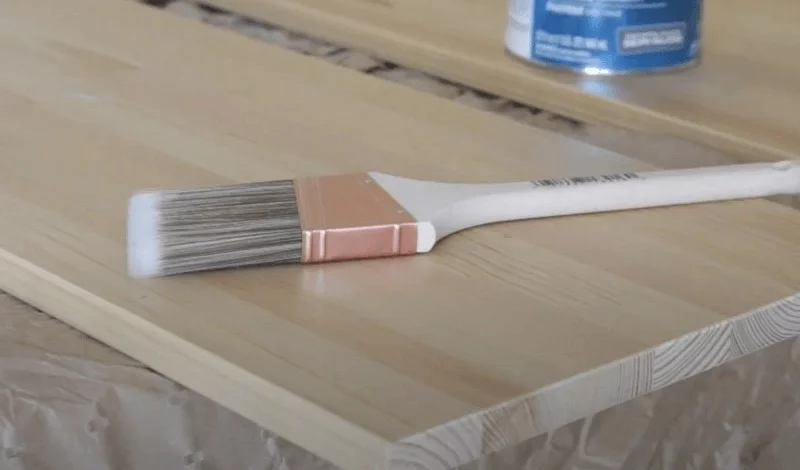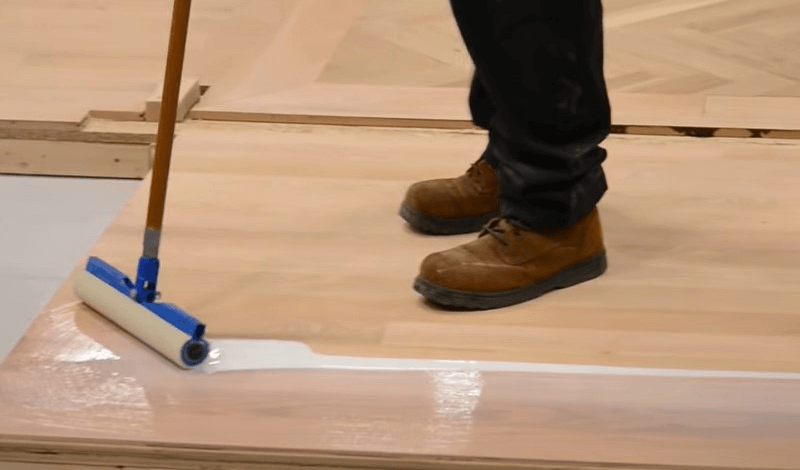Floors are large and tricky to finish with a uniform appearance. It’s more tricky if you choose the wrong applicator.
Here are three sure ways to get good results with water-based poly.
Brush
Applying poly with a brush is the most common method for applying water-based polyurethane. This method involves using an appropriate brush, such as a synthetic bristle or foam brush, to brush the poly on the floorboards. When it comes to water-based poly, the brush used should be soaked in water to eliminate the air trapped between the brush strands for a bubble-free coat.
Brushes are easy to use since the process involved is relatively simple. The steps followed include:

- Preparing the wood by sanding.
- The next step is to pour the polyurethane into a wide plastic container to avoid contaminating the poly with dirt or other impurities.
- Next, pour a line of water-based poly about half a foot from the wall and use the brush to spread a thin layer on the floorboards.
- Repeat for the whole floor.
T-bar
Considered one of the best water-based poly applicators in the flooring world, a T-bar is as professional as it gets. Though some may say a t-bar is similar to a roller there are some significant differences.

Differences between roller vs t-bar
| T- bar | Roller |
| A t-bar is best for big floors like a gym floor that also happen to be single-directional. | A roller is best for multidirectional wooden floors that are otherwise hard to apply with a t-bar and avoid streaks. |
| When using a t-bar the action is pulling. we pull the polyurethane material and spread it across the floor. | When using a roller the poly material is spread across the floor by the action of rolling. The roller cover roll over the material impacting the would-be streaks and air bubbles |
| As stated it is less time-consuming to use a t-bar | a roller involves a more delicate process making it slower |
Best Way to Apply Water-Based Polyurethane
The best way to apply poly on floors is to use rollers. Rollers are often of the lambswool, foam, and synthetic microfiber form. Except for foam rollers, the others can be used when applying water-based polyurethane.
Rolling polyurethane is not only best on floors, but also on other wide enough surfaces like doors, or patios. This method can cover a large area in the shortest time. Moreover, it does not leave behind streaks or collect dust and lint.
The process for application is easy. All you need is the appropriate roller cover attached to the right frame for the job. More extended roller covers go well with long frames and are best for the largest floor. If your floor corridors are smaller, shorter rollers and frames are ideal.
How To roll Water-based Polyurethane
Summary
Several factors often determine the best way to apply water-based polyurethane. To apply polyurethane on floors, rollers are the best. T-bar and brush are a great choice and all of these applicators have to be used alongside other floor finishing applicators like cut-in pads.
Recommended readings
What kind of roller to use for water-based poly